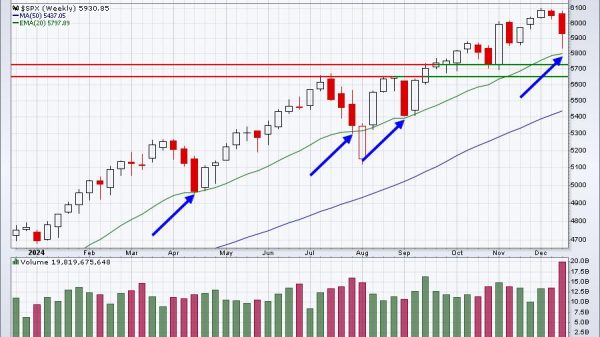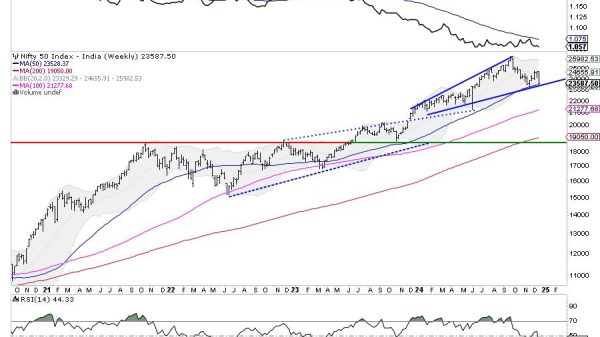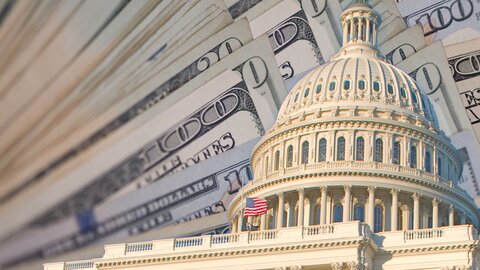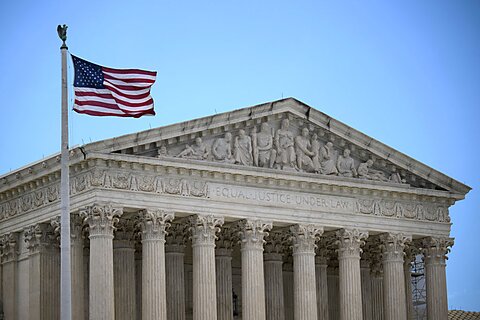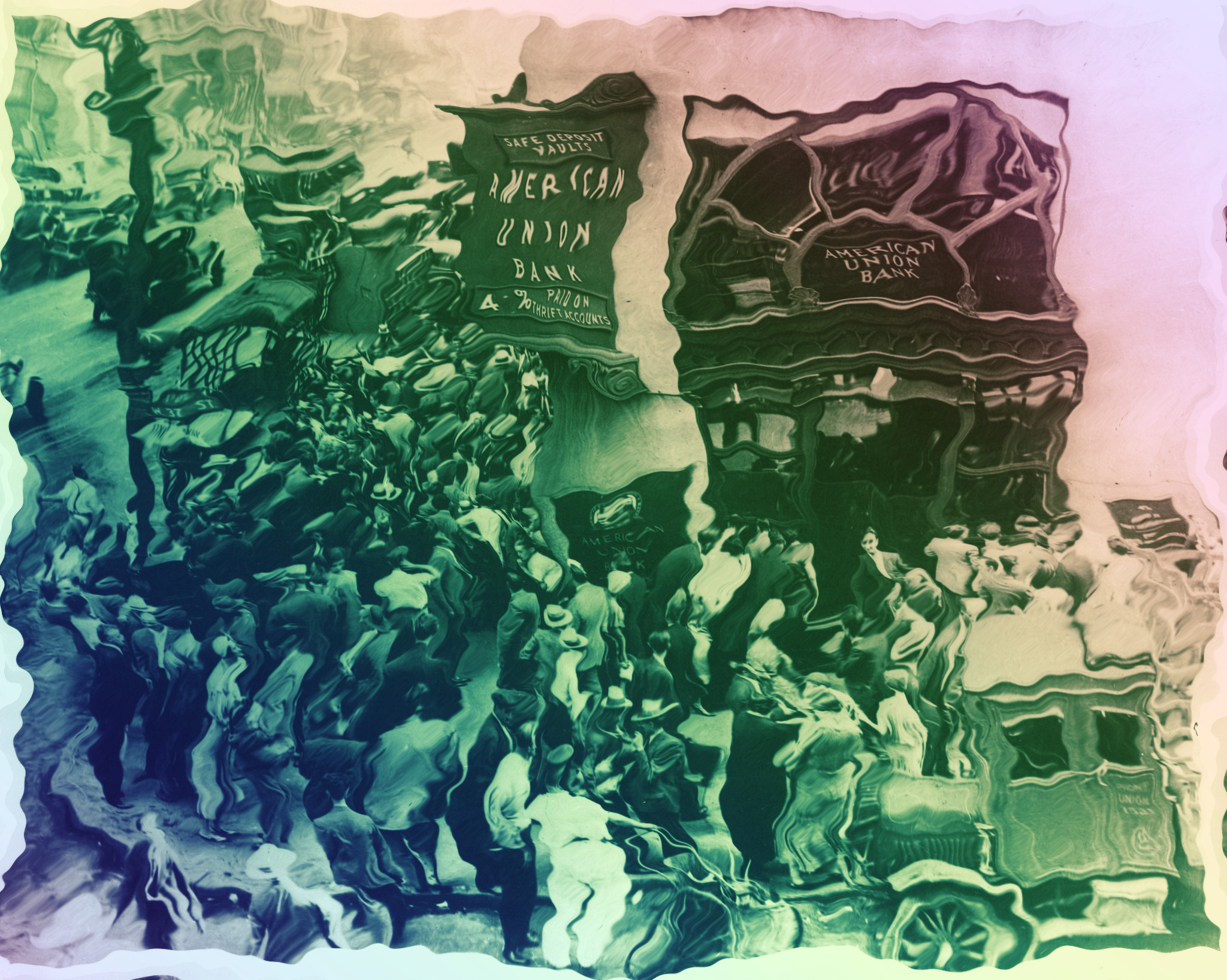On October 10th, Douglas Diamond and Philip Dybvig won the Sveriges Riksbank Prize in Economic Sciences, sharing it with Ben Bernanke “for research on banks and financial crises.”
According to the prize committee, Diamond and Dybvig’s research showed how the combination of borrowing short and lending long exposes even sound banks to runs, since the merest rumor of a run can become “a self-fulfilling prophecy.” “These dangerous dynamics,” the committee wrote, “can be prevented through the government providing deposit insurance and acting as a lender of last resort to banks.”
Exactly one month later, on November 10th, FTX, the world’s second-largest cryptocurrency exchange, suspended redemptions following a wild three-day run during which its depositors withdrew $6 billion. A day later, FTX filed for bankruptcy, leaving its 100,000 remaining creditors with anywhere from $10 to $50 billion in unpaid debts, and throwing other cryptocurrency markets into disarray.
Predictably, the juxtaposition of these events caused many to treat the FTX embroglio as a perfect illustration, and further vindication (in case one was needed), of Diamond and Dybvig’s theory. On Twitter, Yale’s William Goetzmann, the author of Money Changes Everything, declared FTX’s collapse “A Diamond-Dybvig moment,” while Duke University’s Campbell Harvey, whose specialty is decentralized finance, called it “a classic Diamond-Dybvig bank run.” Matt Levine, writing for Bloomberg, likewise suggested that the mere fact that FTX lent (“repurposed”) its clients’ funds made it “vulnerable to runs, Diamond-Dybvig, It’s a Wonderful Life, etc., everyone knows all this.” Dozens of other reports labeled FTX’s troubles a “liquidity crisis,” which is of course the sort of crisis that makes banks go kaput according to Diamond and Dybvig’s famous article.
The problem with all of this is that FTX’s collapse doesn’t illustrate the Diamond-Dybvig story at all. Neither, for that matter, do most runs on commercial banks. And the difference between the sort of bank run Diamond and Dybvig describe, and most actual bank runs, including the one on FTX, is extremely important, for while government-mandated deposit insurance or public last resort lending may be the best ways to prevent or respond to a Diamond-Dybvig style run, other reforms, including market-based ones, are better suited to avoiding the sorts of runs that most often occur in the real world, including runs on cryptocurrency exchanges.
Of course, saying so is a lot easier than convincing you. That’s why this is a long post.
Illiquidity and Insolvency
To understand Diamond and Dybvig’s contribution, it’s essential to recognize the difference between a bank that’s insolvent and one that’s merely illiquid. Any bank that can fully pay off its creditors once its investments mature, or after liquidating them in an orderly fashion, rather than all at once, is solvent. But whether a bank is solvent or not, if it lacks cash with which to pay its current obligations, it’s illiquid.
What distinguishes the Diamond-Dybvig theory of bank runs from other theories is its (not entirely successful) attempt to show how the mere fact that banks are illiquid, as they’re bound to be if they borrow short to lend long, suffices to make them vulnerable to runs. It’s the possibility of runs on otherwise solvent banks that, according to Diamond and Dybvig, supplies a rationale for a lender of last resort, or government-sponsored deposit insurance, or both, because such runs can spoil financial arrangements that would otherwise achieve optimal risk-sharing between patient and impatient depositors.
Diamond and Dybvig themselves leave no doubt that their model is specifically aimed at showing how runs can pose a threat to otherwise solvent banks. To do so, they assume that their theoretical bank’s investments are riskless: there is no doubt that, if allowed to mature, they will yield such returns as will allow it to pay its creditors in full. The trouble it faces isn’t from any risk that its investments will go sour. Instead, it’s due to the possibility that depositors will panic, forcing it to liquidate those investments prematurely. So long as confidence is maintained, Diamond and Dybvig argue,
there can be efficient risk sharing, because in that equilibrium a withdrawal will indicate that a depositor should withdraw under optimal risk sharing. If agents panic, there is a bank run and incentives are distorted. In that equilibrium, everyone rushes in to withdraw their deposits before the bank gives out all of its assets. The bank must liquidate all its assets, even if not all depositors withdraw, because liquidated assets are sold at a loss.
Importantly, it’s only “because even ‘healthy’ banks can fail” that “bank runs cause real economic problems.” That’s because runs on insolvent banks—that is, banks that have invested badly—don’t necessarily spoil an otherwise optimal risk-sharing arrangement. Instead, by hastening the closure of banks that have invested imprudently, or otherwise mismanaged depositors’ funds, they may actually be efficient means for limiting waste.
As if to make this distinguishing feature of their theory especially clear, Diamond and Dybvig contrast it with Irving Fisher’s explanation of bank runs, in his 1911 book The Purchasing Power of Money. According to Fisher, it’s “the failure (or prospect of failure) of firms that have borrowed heavily from banks” that
induces fear on the part of many depositors that the banks will not be able to realize on these loans. Hence the banks themselves fall under suspicion, and for this reason depositors demand cash. Then occur “runs on the banks,” which deplete the bank reserves at the very moment they are most needed.
Comparing Fisher’s theory to their own, Diamond and Dybvig say that while he assumes that runs happen when a “bank’s assets, which are liquid but risky, no longer cover the nominally fixed liability (demand deposits), so depositors withdraw quickly to cut their losses,” in their model a run “is caused by a shift in expectations, which could depend on almost anything, consistent with the apparently irrational observed behavior of people running on banks.” Indeed, the only thing that can’t trigger a run on a Diamond and Dybvig bank is depositors’ discovery that it is actually insolvent, for the Diamond-Dybvig bank is, by construction, a good bank. The only “shock” its depositors have reason to fear is one to which they themselves might expose it by losing their cool.
In the literature, Diamond-Dybvig type runs are often referred to as “random” runs; in contrast, Fisher-type runs are “information-based.” In a 1988 paper, Charles Jacklin and Sudipo Bhattacharya offer a formal theory of information-based runs, showing how their likelihood and welfare implications differ from those of runs of the Diamond and Dybvig type. Among other things, they show that, according to their model, runs aren’t a problem so long as banks’ investments are reasonably liquid and depositors aren’t highly risk averse. Runs can even prove beneficial, by forcing banks to liquidate investments that seem likely to go south. Finally, there are cases in which even risk-averse depositors won’t be inclined to run on a bank despite hearing bad news about it. Although Jacklin and Bhattacharya’s findings don’t necessarily rule out a role for deposit insurance or last resort lending in discouraging information-based runs, they point to other options that can work as well, or better.
One Bad Bank
Although cryptocurrency exchanges aren’t banks, some, including FTX, operate like banks, using funds they receive from their clients, and promise to return to them on demand, to finance risky investments. Consequently, their customers can stage runs for the perfectly rational reasons that they suspect that some of their money has been gambled away.
A cursory review of the circumstances leading to the run of FTX suffices to show that there was nothing irrational about it. The immediate cause of FTX’s downfall was a disturbing November 2nd report concerning Alameda Research, a trading firm founded by Sam Bankman-Fried, who also founded and ran FTX. Alameda suffered a string of losses in the weeks leading to FTX’s collapse, and was almost certainly insolvent. But according to CoinDesk, it filled the big hole in what was then its $14.6 billion balance with FTT and other tokens FTX itself manufactured and lent to it. Alameda then valued the tokens at their bull-market prices. Despite FTX’s assurances that it was serving as a mere custodian of its customers’ cryptocurrency balances—that is, that the funds it received from them were not its property and would not be lent by it— it in effect made those customers Alameda’s creditors, putting them on the hook if Alameda went under.
No sooner had the beans been spilled than confidence in both companies started to unravel, while allegations of malfeasance multiplied. The run on FTX really got going when Binance—the world’s largest cryptocurrency exchange, which then held about $500 billion FTT tokens—decided to unload them. Although Binance subsequently announced plans to buy FTX and rescue its creditors, on November 9th, it walked away from that deal. Both FTX and its independent sister company, FTX.US, suspended customer withdrawals on the 10th, and both, together with Alameda and numerous other FTX affiliates, filed for bankruptcy in Delaware on the 11th. As of this writing, FTT tokens, which were worth over $25 each before the start of November, are trading at $1.36.
So far, it appears that liquid USD assets made up only a paltry $900 million of FTX’s balance sheet, as compared with about $8.7 billion in illiquid private equity and non-USD crypto token investments. It will be some time, of course, before FTX’s liquidation value is known; but calling its creditors’ prospects for full recovery slim is almost certainly understating things: FTX account holder bankruptcy claims were recently selling for as little as ten cents on the dollar. In short, whatever sort of bank FTX was running, it was a far cry from the outfit Diamond and Dybvig describe in their famous paper.
FTX’s collapse had plenty of spillover effects, including runs on other exchanges. But so far these also appear to be information- rather than panic-based. In particular, most seem to reflect cryptocurrency markets’ high degree of “interconnectedness” rather than a mere epidemic of fear: the failure of Sam Bankman-Fried’s firms harmed other cryptocurrency firms with direct credit exposures to them, or dependent on them for financing; and the directly harmed firms in turn harmed others connected to them; and so on. But the ripples only went so far: as The Atlantic‘s Annie Lowrey reported on November 12th,
the FTX debacle has thus far had no evident impact on the stock market, nor has it had any effect on the stocks of publicly traded financial firms. The Wall Street “fear index,” a measure of financial volatility, went down a touch when FTX went down in flames. A number of firms wrote down or are expected to write down the value of their investments in FTX. But there is little concern about systemic risk, at least for now.
Nor were cryptocurrency firms themselves attacked indiscriminately. Instead, as Fortune‘s Jeff John Robert’s reports, there were both winners and losers, where the former included both centralized exchanges that “resisted the urge to chase crypto riches through leverage and offshore shell games” and decentralized ones “whose design ensures they are properly collateralized and can’t be destroyed by the greed or folly of a single individual.” Such discrimination is hard to square with a theory that sees runs as an outbreak of unfounded fear.
The Usual Story
Although the run on FTX was unlike most bank runs in many respects, the fact that it was information based wasn’t one of them. For most bank runs have also been runs on firms that appeared to be insolvent, or close to it, before the runs began. In other words, the “irrational observed behavior” to which Diamond and Dybvig refer hasn’t actually been observed often; and what Matt Levine calls “a classic normal bank run” isn’t normal at all.
It’s perhaps for this reason that, despite being fictional, the run on Bailey Brothers Building & Loan, as depicted in It’s a Wonderful Life, has become economists’ favorite example of a Diamond-Dybvig type run. The Nobel Prize committee itself cited it. Yet even that run doesn’t really illustrate Diamond and Dybvig’s theory, because it’s triggered by depositors’ discovery that “Uncle” Billy Bailey misplaced $8,000 of the bank’s cash—a lot of money for a “measly one-horse” thrift back in the ’40s. Moreover, since thrifts didn’t offer demand deposits back then, Bailey Brothers Building and Loan wasn’t under any obligation to let its upset depositors cash-in their balances. A purely panic-based run does occur in Mary Poppins, which is the second most popular example of a Diamond-Dybvig bank run. In an article praising Diamond and Dybvig’s theory for its relevance, Noah Smith mentions both Hollywood runs, but no others.
Smith’s exposition begs the question, “Just which real-world runs fit the theory?” Studies by economic historians mainly succeed in showing that few do. This has been so even in the United States, which has seen more than its fair share of bank runs, failures, and crises. For example, most of the bank failures of the so-called “free banking era” (1837-1863) resulted not from runs or even from fraud but from declining bank asset values, where the troublesome assets were often ones bankers were compelled by law to purchase. There were runs, to be sure. But according to Jerry Dwyer and Iftekhar Hasan, they were triggered by other shocks, and don’t seem to have independently added to the number of permanent bank closings.
After carefully reviewing bank runs during the pre-Fed National Banking Era (1963-1914), Charles Calomiris and Gary Gorton conclude that, instead of fitting the Diamond-Dybvig theory, they generally took place under circumstances in which “bank depositors would rationally change their beliefs about the riskiness of banks. Even the so-called “panics” of the national banking era were “triggered by rational revisions in beliefs about bank performance,” rather than depositors “irrational…behavior.”
But these early episodes aren’t the ones people usually have in mind in mind when they conjure up visions of otherwise sound banks being forced to close by panicking depositors. Instead, as the late George Kaufman remarked, it’s “the harrowing but rather unique experience of the Great Depression” that people think about. Yet even the bank failures of the early 1930s were for the most part caused by developments other than runs. As Kaufman notes, and as I have myself explained elsewhere, they mostly
reflected the severe problems in agriculture from a continuing sharp decline in commodity and land prices after an even sharper run up. Ninety percent of the banks that failed…had capital of less than $100,000, had loans and investments of less than $1,ooo,ooo, and were located in towns of less than 5,000 in population. Even after adjusting for the sixfold [in 1983] increase in prices since that period, these were Ma and Pa banks by any measure and were unlikely to have been diversified greatly or managed professionally.
Of course, it wasn’t just rural banks that failed during the depression; and in some instances, including the July 1932 Chicago banking crisis, depositors didn’t just run on sound banks. Still, even in that case, according to Calomiris and Joseph Mason, the runs were “caused by fears of bank insolvency, rather than exogenous liquidity demand by depositors.” If some good banks fell victim to runs, it was because they were suspected, usually with reason, of having dealings with, or otherwise being in the same boat as, ones known to be in trouble. In other words, the runs were information based, but the information was far from complete, so some banks fell under suspicion despite being sound.
Of all the runs that happened during the 1930s, it’s the ones that began in February, and ended with FDR’s declaration of a nationwide bank holiday on March 6th, that are most often regarded as proof of a widespread panic. But as Barry Wigmore convincingly argued not long after Diamond and Dybvig’s article was published, those runs were, in fact, triggered by concerns about the president-elect’s plans for the gold standard. As inauguration day (then March 4th) drew near, Roosevelt’s failure to firmly commit to maintaining the gold standard raised fears that he’d devalue the dollar after taking office. So depositors rushed to their banks, not because they distrusted them, but because they distrusted paper dollars themselves. Once they got hold of Federal Reserve notes, the public rushed again, this time to the Fed, and especially the Federal Reserve Bank of New York, to swap them for gold. It was the New York Fed that asked New York State governor Lehman to declare a bank holiday, over the objections of most of New York’s big commercial banks, were that holiday in turn forced the rest of the nation’s banks to close.
Another insufficiently appreciated fact about both rural and urban bank runs during the depression is that it was sophisticated depositors with large accounts rather than small, unsophisticated ones who led the way. In a Federal Reserve study examining runs on 67 urban banks that suspended then, Martin Frost found that, although they made up only 28 percent of those banks’ deposits, accounts of $25,000 (the equivalent of about half a billion today) or more accounted for more than 40 percent of withdrawals. “The smart fellow gets out first,” the president of Chemical bank told the Senate Banking Committee in 1932, “and he is the big depositor”—that is, the ones who were generally assumed to know which banks were, and which ones weren’t, in good condition.
Although deposit insurance schemes have for some time deprived many bank depositors of any incentive to run on their banks, runs still occur; and in the vast majority of cases, their objects have been banks suspected—usually with good reason—of being insolvent. In an article published the same year as Diamond and Dybvig’s, Joseph Aharony and Itzak Swary examine bank stock prices for evidence of contagion effects of what were, in those innocent times, the three largest bank failures in U.S. history: those of Franklin National Bank of New York (FNB), the United States National Bank of San Diego (USNB), and the Hamilton National Bank of Chattanooga (HNB). They conclude “that the pure contagion effect hypothesis is not supported by the data.” In particular, they found no contagion effects at all from the failures of USNB and HNB, both of which were guilty of fraud and other irregularities. “The implication,” Aharony and Swary conclude, “is that failure of a dishonestly run banking institution, even a large one, need not cause panic and loss of public confidence in the integrity of the banking system as a whole.”
As Jonathan Rose reports, what had been true in earlier times continued to be so during the great financial crisis of 2008, when runs on Wachovia, Washington Mutual, and some smaller banks were also led by large depositors, and every one came in the immediate wake of shocks that undermined, or revelations concerning, banks’ soundness. Although some of the runs were contagious, the contagions were quite limited, both geographically and according to whether or not nearby banks had also been objects of negative publicity.
History, in Theory
Despite the historical record, ever since Diamond and Dybvig published their article, many if not most economists have tended to view every financial firm collapse as a “Diamond Dybvig Moment.” A noteworthy example is another Nobel Laureate, Robert Shiller. Early on in a lecture on “Banks” that was part of his 2011 Open Yale Course on “Financial Markets,” Shiller refers to Diamond and Dybvig’s 1983 work not as “a” theory of banks, but as “the” theory of banks. We should not be surprised, therefore, to see him go on, in his discussion of banking crises, to treat them all as illustrations of Diamond and Dybvig’s theory, that is, as episodes that happened simply because bank depositors got “scared…and tr[ied] to pull all their money out,” causing “the whole banking system” to collapse.
As I’ve noted, the sheer-panic interpretation fails badly even as an explanation for the 1933 banking crisis, which (unlike most) might be said to have involved the “whole banking system.” Shiller’s attempts to explain other runs using it fare no better. Take his first example, concerning the 2007 failure of Great Britain’s Northern Rock bank, the U.K.’s first major retail bank run since 1866. “A rumor started,” Shiller says, “that Northern Rock held a lot of subprime securities, and was going to go bankrupt, so people rushed to Northern Rock…people thought ‘well this is just like 1933’.” Then, according to Shiller, Bank of England Governor Mervyn King put a stop to the run by offering to bail everyone out.
To call Shiller’s account of the run on Northern Rock less than accurate is to be generous to a fault. As Hyun Song Shin explains in a 2009 article in the Journal of Economic Perspectives,
the storyline of the Northern Rock bank run does not fit the conventional narrative. On September 13, 2007, the BBC’s evening television news broadcast first broke the news that Northern Rock had sought the Bank of England’s support. The next morning, the Bank of England announced that it would provide emergency liquidity support. It was only after that announcement…that retail depositors started queuing outside the branch offices.
Nor did Northern Rock hold many subprime loans or securities. It suffered from its unusually heavy reliance on wholesale rather than retail (deposit) funding. The market for wholesale funding all but froze up after the BNP Paribus suspended redemptions on three of its funds in August 2007. The Northern Rock run was, therefore, “an event in the aftermath of [its] liquidity crisis…rather than the event that triggered its liquidity crisis. In this sense, the Northern Rock episode was not an old-fashioned bank run of the sort we see in movies like It’s a Wonderful Life or Mary Poppins.”
Instead of being brought down by jittery retail depositors, Northern Rock’s fate was sealed “by sophisticated institutional investors.” As Hyun goes on to explain,
the irony of the images of Northern Rock’s retail customers standing in line to withdraw deposits is that retail deposit funding is perhaps the most stable form of funding available to a bank. Although retail deposits can be withdrawn on demand, bankers have been heard to joke that a depositor is more likely to get divorced than to switch banks.
Diamond and Dybvig’s research has been extremely influential, and that fact alone may justify their having earned the Bank of Sweden’s prize for it. But as Shiller’s account of Northern Rock’s collapse makes clear, the theory’s influence hasn’t been entirely benign. When economists and policymakers, ignoring the work of economic historians, insist on viewing actual bank runs through Diamond-Dybvig colored glasses, they see a warped version of history; and warped versions of history can inspire unwise policies.
Good versus Bad Runs
Although the run on Northern Rock wasn’t a Diamond-Dybvig run, Northern Rock’s failure was a rare case of a bank failing for want of liquidity, rather than because its investments were bad. As such it points to dangers inherent in at least some sort of maturity mismatching. Even so, Northern Rock’s liquidity problems were a result of its own imprudence; and it was imprudent not because it relied on ordinary, retail demand deposits to fund its investments, but because it didn’t do so, whereas most bankers had long understood that “core” retail deposits are a far more stable funding source than short-term wholesale funds. Consequently it isn’t obvious that more complete deposit insurance coverage or more timely last-resort lending would have been ideal remedies for Northern Rock’s liquidity problem.
Indeed, in many cases in which a bank is about to fail because it has acted imprudently, its failure may be optimal whether runs hasten it or not: as George Kaufman explains (pp. 6-7), a central bank that keeps a reckless bank alive by lending it funds with which to pay off its anxious creditors can reduce rather than enhance social welfare, and especially so if the banks net worth becomes negative while it is being kept on support. When allowed to proceed, runs on insolvent banks keep them from becoming “zombie” institutions the costs of whose failure ultimately falls on taxpayers. In short,
bank runs do not deserve the bad reputation they have received. They did a dirty job in maintaining market discipline. But someone had to do it! Eliminating dirty jobs per se does not eliminate the problems that give rise to these jobs.
Although it’s true that, where depositors are not perfectly informed of their bank’s investments, an insolvent bank’s failure can trigger runs on some solvent banks, that possibility justifies last-resort lending to the solvent banks, not the insolvent ones; and because lending to solvent banks isn’t particularly risky, it is much more likely to be supplied privately. Finally, although a case can be made for insuring unsophisticated depositors against losses even when those losses result from their banks’ misconduct, that case hardly justifies coverage of “$250,000 per depositor, per insured bank, for each account ownership category” and other policies that may keep bank depositors whole only by ultimately passing the cost of bank failures on to persons who are still less culpable, and perhaps even less well-off.
FTX’s failure, however dramatic, seems like a perfect example of a run on a financial institution doing its “dirty job in maintaining market discipline.” Far from disrupting optimal risk-sharing arrangements, it helped put a stop to an ultimately unsustainable departure from such arrangements. And while FTX’s collapse shook up other crypto markets, it posed no serious systemic threat. Might a much bigger FTX-style failure have done so? Sure: but the likelihood that any such gigantic fiasco occurs is only reduced by letting those caught up in smaller-scale meltdowns take their lumps. In short, if the choice is between the Diamond Dybvig solution of government guarantees, with all their moral-hazard pitfalls, and not doing a darn thing, then not doing a darn thing is probably better.
Better than Bailouts
But those aren’t the only choices. Because Diamond-Dybvig runs can happen for no reason at all, nothing short of blanket depositor guarantees, and the outright prohibition of all sorts of uninsured intermediaries that engage in maturity mismatching, can easily rule them out. In contrast, when runs are information-based, whether they afflict sound financial firms or only unsound ones depends on the accuracy of the information available to those firms’ customers. The more accurate that information, the less likely it is that runs will harm otherwise solvent businesses.
It follows that there are ways to protect clients of cryptocurrency firms from losses without undermining market discipline. This can be done by requiring that uninsured cryptocurrency exchanges and token issuers routinely publish audited reports listing their asset holdings. The Stablecoin Transparency Act (S. 3970and H.R. 7328) is a reform in this spirit specifically aimed at USD stablecoin issuers, as is an earlier proposal put forward by my CMFA colleagues.
A complementary reform is the “ring-fencing” of relatively liquid assets suitable for backing cryptocurrency balances, so as to assure holders of those balances full recovery in event that a firm fails owing to its or its affiliates’ risky undertakings. Ring-fencing can be achieved either by legally relegating cryptocurrency firms’ deposit-taking operations to a “bankruptcy remote” subsidiary or by putting a licensed third-party custodian in charge of safeguarding its customers’ cryptocurrency balances.
Other promising reform options don’t require government intervention, as they’re already being taken up voluntarily by the cryptocurrency industry and cryptocurrency users. The first, “Proof of Reserves” (PoR), uses cryptographic verification to allow a centralized exchange’s auditors to see exactly where their clients’ funds are going or, equivalently, what’s backing their account balances. PoR alone can’t stop an imprudent or dishonest exchange from making risky or unauthorized investments, and failing as a result, but it can at least assure customers of other exchanges that those exchanges aren’t in the same boat. Soon after FTX’s collapse, Binance announced that it would start employing PoR on its accounts; and several other exchanges have already included PoR in their post-FXR audit reports.
A still more intriguing option would return cryptocurrency transacting to its decentralized roots: the original point of cryptocurrency was to eliminate any reliance upon third parties, and thereby render cryptocurrency transactions entirely safe from bad actors. Although cryptocurrency users may gain certain advantages by relying on centralized exchanges like FTX, by resorting to them they defeat that original purpose. But an open-source algorithm of the sort that makes Bitcoin a truly decentralized medium also makes decentralized cryptocurrency exchange (DEX) possible, completely avoiding all the dangers involved in trusting one’s coins to central counterparties with opaque balance sheets. “Suppose,” Campbell Harvey writes, that
I own asset A and I want to buy asset B. I send my asset A to the decentralized exchange and in return I get asset B. I see the liquidity and I see the price. I can do this 24/7. A DEX has no central counterparty. I interact directly with the algorithm. … I can see the liquidity in real time, essentially an instantaneous audit. There is no leverage. The liquidity is not lent to hedge funds. No broker/dealer is involved… .When I trade, the execution and settlement are simultaneous. Most importantly, I do not delegate custody of my tokens. The result is no waiting in line as an unsecured creditor in a bankruptcy.
There are already scores of DEX exchanges, activity on which has surged since FTX went belly-up.
All these alternative ways to limit cryptocurrency runs have bugs that need ironing out, if not more fundamental shortcomings. DEX, for example, puts the burden of storing and looking after coins back on individuals (though improved cryptocurrency wallets can considerably lighten that burden); and PoR is no guarantee that a firm won’t go bankrupt, or that absent ring-fencing holders of balances with “proven” reserves won’t be treated as unsecured creditors. But as my colleagues have noted elsewhere, good cryptocurrency regulations are worth waiting for, and because information-based runs on cryptocurrency firms pose no systemic threat, so far, to the U.S. financial system, regulators will have plenty of time to get things right. That is, they’ll have plenty of time, unless they panic.
The post Bank and Crypto Runs: F(ac)TX vs Fiction appeared first on Alt-M.








